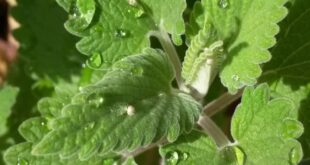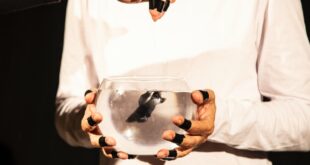In the world of cocktails, you may often hear about liquor and also liqueur. They sound similar but differ in many ways and may not be interchangeable. As a result, many may find them confusing. How do liquor and liqueur differ?
Liquor is an umbrella term for all types of stronger alcohol, such as Vodka, rum, or whiskey. Liqueurs are stronger alcohol as well, but with additional flavorings and sugars added to them. Liqueurs can be a part of liquor. Liquors are often drunk on their own, while liqueurs are mostly used in mixers in cocktail drinks.
This post explores the differences between liquor and liqueur. We start by explaining what they are before trying to differentiate between the two.
What Is A Liquor?
Liquor is a type of alcoholic beverage, usually distilled, to increase its alcohol by volume (ABV) count. It is different from wine and beer, as it needs to be distilled and aged longer to develop its taste. Popular examples of liquor include whiskey, rum, gin, or tequila.
Liquors are alcoholic spirits in general, including distilled beverages made with vegetables, fruits, or grains. Liquor is considered one of the ‘big three’ in alcohol, together with beer and wine.
However, liquor is differentiated from wine and beer because it has a much higher alcohol by volume (ABV) percentage. This is because part of making liquor involves distillation, which increases the ABV count. Beer and wine are not distilled, hence having a lower ABV count.
The process of making liquor starts by selecting a medium and then fermenting it in water with the help of yeast. These mediums are usually grains such as malt, but could also be vegetables such as potatoes. Fruits are also commonly used as a fermentation medium.
As the drinks ferment, the sugar content is converted into alcohol, forming an undistilled alcoholic drink. This undistilled alcoholic drink is processed, refined, and gassed up to be sold as beer.
However, for liquor, the fermented liquid is then taken off to the distillery to be distilled. Distillation is usually done using a still. After distilling, impurities were removed, and the drinks became higher in ABV.
The distilled drink is stored for years to develop flavor before being bottled up and sold. Depending on the type of liquor, the storage container may be barrels made of specific types of wood, such as oak, cherry, or hickory.
Some popular liquors include drinks such as Whisky, Whiskey, Vodka, Rum, Gin, liqueur, and Tequila. The most widely consumed liquor in the US is whiskey, followed closely by Vodka.
What Is A Liqueur?
The liqueur is an alcoholic drink, usually made by infusing base spirits with additional flavor, and sugar. It originated as a herbal medicinal drink but is now commonly used as a mixer. It is commonly served as a drink with or after a dessert or mixed with other beverages to form cocktail drinks.
The liqueur is also an alcoholic drink. It is composed of spirits, with additional flavoring added. These flavors could include sugar, herbs, spices, or fruits. You may often see liqueur bottles mentioning the ingredient they mix into the drink.
Liqueurs originated as herbal medicine, where monks in Italy mix herbs and spices into alcohol spirits to preserve and extract their medicinal qualities. Over time, the variation of liqueurs increased, and they are now more valued for their versatility.
Liqueurs are usually made by infusing fruits, spices, or other flavorings into the alcohol spirit. Some may extract liquids from these ingredients and then mix these liquids into the spirit. In many liqueurs, sugar is added to make the drink sweeter.
Today, liqueurs are often served after a meal, typically with or after dessert. You may also see liqueurs added to ice cream and drinks such as coffee. Liqueurs are also commonly used in cooking as well.
However, liqueurs are most popular as mixers in cocktail drinks. Many common cocktails usually include at least one liqueur. For example, a Long Island Iced Tea may need you to use a Cointreau (orange liqueur)
Liqueurs can be classified into several types, such as:
Amaro
Amaro is a family of bitter liqueurs from Italy. Commonly drunk in Italy, different Amaro brands usually contain different herbs and spices formulations, making them taste different.
Herbal
Herbal liqueurs may be the earliest liqueurs. These usually contain a mix of herbs and medicines, usually drunk as a way to maintain health. Common examples include Benedictine, Jägermeister, and Chartreuse.
Cream Liqueurs
These are thick, creamy liqueurs, usually made with the help of dairy products and sugar. The most common cream liqueurs are Baileys and Amarula.
Crème Liqueurs
These thick liqueurs resemble syrup and do not contain anything dairy. Common examples of cream liqueurs are crème de cacao or crème de menthe.
Fruit Liqueurs
These are liqueurs made to bring out the flavors of fruits. Fruits may be infused in spirits to bring the flavor in, and sugar is then added to infuse sweetness. Common examples include Kahlua (coffee liqueur), Pinaq (pineapple liqueur), or Cointreau (orange liqueur).
How Do Liquors and Liqueurs Differ?
Liquors and liqueurs differ in many ways, such as in taste, alcohol content, the aging process, variety, and consumption. This means both drinks are not meant to be seen as similar or used interchangeably.
| Aspects | Liquor | Liqueur |
| Taste | Rarely sweet | Sweet |
| Alcohol Content | Higher | Lower |
| Aging | Aged longer | Almost never aged |
| Variety | Less variety | More variety |
| Consumption | Usually drunk neat (on its own) | Usually mixed with other beverages |
| Expiry | 12-24 months after opening | 6 – 12 months after opening |
Taste
Generally, liquor tends to have a lighter taste. This is because generally, no additional flavorings are added to the liquor. However, for lower-quality liquor, additional flavors may be added to mask the liquor’s lack of natural flavors.
Liquor also is more likely to develop its taste based on the barrel it is stored in. For example, whiskies with a smoky taste tend to be stored in charred oak barrels. The aging process also helps liquor to develop a stronger flavor profile.
This is contrasted with liqueur, where flavorings are added heavily to alter the drink’s taste. The base spirit is often tasteless, which allows the liqueur makers to infuse ingredients to add flavor to the spirit. Some also extracted the flavor from their ingredients and blended it with the spirit to make a liqueur.
Liqueurs also usually have sugar added, as liqueurs have traditionally been made sweet to enhance their taste. Depending on the type of liqueur, some may have a lot more sugar added in, while some have less.
Regulations have stipulated that liqueurs must have 2.5% of their weight in sugar. Anything less means the alcoholic beverage is not a liqueur, but a flavored liquor.
You may like this article: How Many Ounces In A Shot Glass?
Alcohol Content
The alcohol content in a drink is usually measured via alcohol by volume (ABV) and is usually expressed in percentages. So we will use this measurement to compare the alcohol content.
Generally, liquors tend to have higher alcohol content than a liqueur. For example, it is common to see whisky, Vodka, or tequila around the alcohol by volume (ABV) of around 40% to 55%. With liqueurs, it is much more common to see ABV readings of around 15% to 30%
For example, if you look at a Johnnie Walker Black Label whisky, the ABV reading is 40%. In comparison, Bailey’s Irish cream liqueur may only have ABV readings of 17%.
This is because of the ingredients. Liquor is a much purer drink without any additional ingredients or materials. On the other hand, liqueur may have additional extracts, sugar, and flavorings added in.
This means if you compare a single liter of liquor to a liter of liqueur, you get more distilled alcohol from liquor.
Aging
Liquors tend to be aged much longer compared to liqueur. Is it common to see liquors spending years inside barrels to develop flavor and color. In fact, liquors such as whisky may be aged in a barrel for over 20 years. This allows it to develop full flavors before being opened up and served.
This may not be the case for liqueurs. Most liqueurs are not aged but merely rested for a short period for the taste to gel and settle down. This is because there may be little need to. The flavors, tastes, and colors can be added to the spirit directly.
Variety
Liquors may have less variety compared to the liqueur. In general, you may see a limited amount of liquors offered, such as whisky, whiskey, rum, gin, Vodka, and tequila.
You may further expand the varieties of liquor by making flavored liquors, essentially liqueurs, without sugar. However, they are also less common.
You may see a lot more variety of flavors in liqueurs. This is because liqueurs are easier to produce, and a new variant of liqueur can be made by simply mixing in flavors from any fruit, vegetables, herbs, spices, or other food items.
For example, a Jägermeister is a herb liqueur, Kahlua is a coffee liqueur, and Midori is a watermelon liqueur. This gives liqueurs a lot more variety, which means good news for mixologists researching the next great cocktail.
Ways of Consumption
Liquors and liqueurs tend to be consumed similarly, with some subtle differences. This is due to how they taste.
Liqueurs tend to be drunk during or after dessert since their sweet taste makes it a good way to end a meal. Liquors, however, may be drunk before a meal as an aperitif to open up the appetite. A Liquor may also be served after a meal.
Liquors are more likely to be drunk on their own. Some liquor, such as whisky, may be consumed with a small amount of water or ice added in. Some liquors, particularly of lower quality, may be mixed with other drinks.
Liqueurs are more likely to be drunk as part of a mixture of drinks rather than on their own.
For example, Bailey’s Irish cream liqueur may be mixed with coffee to make Irish Coffee. Most liqueurs today are produced to mix with other drinks rather than consumed alone.
Expiry
Once opened, liquors may have a longer shelf life, compared to liqueurs. Generally, a bottle of liquor may last around a year or two. If you apply the same situation to a bottle of liqueur, you are looking at a shelf life of around 6 months to a year.
The reason is that liquor is a purer drink with little additional content inside. It also has a higher alcohol volume, which acts as a preserver for the drink.
This contrasts with liqueurs, which may have many more ingredients that may deteriorate faster. The lower alcohol content also may not be able to help preserve the drink as well as the liquor. The higher sugar content may provide some additional preservation help, but generally not much.
 Being Human
Being Human




